This was published 6 years ago
The Beatles' Sgt Pepper album turns 50: The album that changed everything about recording music
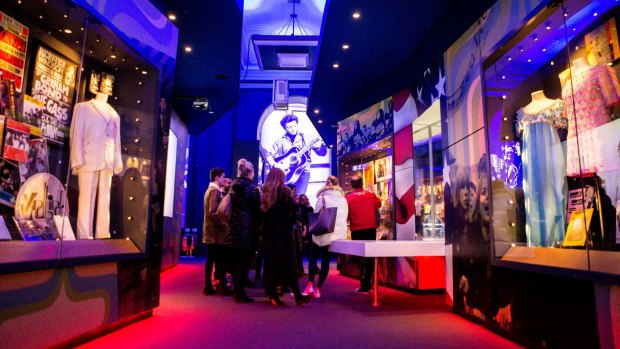
Inside the British Music Experience.
Liverpool has evolved massively in recent decades, from down-in-the-doldrums port to rejuvenated city of culture, a place brimming with swaggering new hotels, bars, restaurants, galleries, museums and festivals.
Yet one thing remains constant. It's hard to walk five minutes without seeing – or hearing – something to do with The Beatles. It might be a vintage poster of a mop-topped John, Paul, Ringo and George; it might be a busker strumming Help! or Yesterday; it might be a statue of ''Eleanor Rigby'', complete with a plaque dedicated to "All the Lonely People".
If you're fond of the Fab Four – and I still remember, as a nipper, rummaging through my parents' Beatles vinyl LPs and placing them under the crackling needle of our record player – a pilgrimage to this exuberant city by the River Mersey is a treat. Especially this year – the 50th anniversary of Sgt Pepper's Lonely Hearts Club Band. One of music's most seminal albums, it's spawning a wealth of festivities across the Fab Four's home city (whose economy gets an estimated $140 million boost from Beatles-related tourism each year).
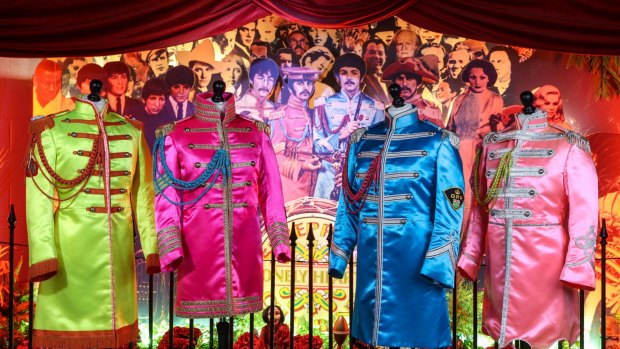
Sgt Pepper suits at The Beatles Story.
There's much hype about the St Pepper at 50 extravaganza (until June 16). A citywide feast of art, dance, music, poetry and theatre, it's using the album's 13 tracks as the creative spark for 13 events, such as Suspended Time, a pyrotechnic spectacle inspired by Lucy in the Sky with Diamonds (slated for the album's June 1 birthday), and When I'm Sixty-Four (June 8), which will see 64 choirs of all ages come together for a mass singalong live on BBC Radio Merseyside.
Celebrations will peak in August during the annual International Beatleweek Festival, a gathering of 70 bands from more than 20 countries and fans from more than 40. Crowd-pulling draws will include the Summer of Love concert (August 26) a special tribute to Sgt Pepper at the city's Philharmonic Hall.
"On this album, The Beatles, once again, were pioneers, pushing boundaries and pushing each other musically," says festival figurehead Jon Keats. "It (Sgt Pepper's) changed everything really, the recording process, the Beatles locked up in the studio, released from endless touring, creating this masterpiece. Fifty years later, it is still a remarkable piece of work – and that's without even mentioning the album cover!"
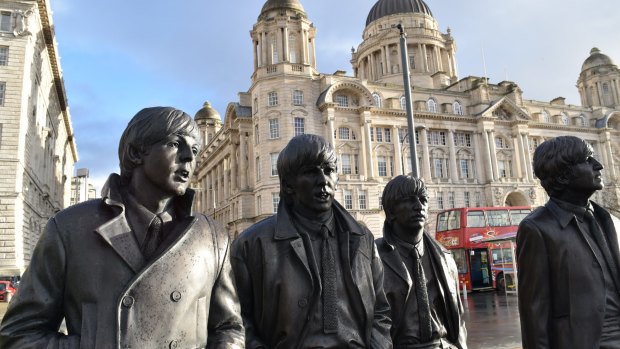
Beatles statue near the BME.
A Liverpudlian, Keats is music and events director at the Cavern Club, a replica of the venue in which The Beatles played about 300 times from 1961-63. The original club closed in 1973 – and was filled in during construction work for Merseyside's underground rail network – but the ''new'' Cavern, built in 1984, a guitar's throw away in the same buzzing, cobbled Cavern Quarter, contains bricks from the old place and, according to a few veteran pint-sipping Scousers (Liverpudlians) I speak to in this atmospheric basement joint, is almost as much fun.
Live acts (including Keats himself) jam beneath the Cavern's vaulted arches throughout the week. I'm here for one of the weekend performances from The Cavern Club Beatles, four local lads who do a convincing impression – in both look and sound – of their idols. They get me and my fellow punters tapping our feet and singing along to the likes of I Wanna Hold Your Hand, She Loves You and With A Little Help From My Friends.
Conveniently, the Cavern is a two-minute stumble from the Hard Days Night Hotel, a five-star ode to the Fab Four set in a handsome 19th century building. Beatles-tinged artwork and photographs decorate the swish public areas, including Blake's (the hotel's restaurant named after Sir Peter Blake, who designed Sgt Pepper's album sleeve).
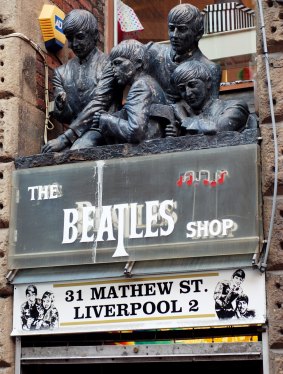
The Beatles shop in Liverpool's Mathew Street. Credit: iStock
The pick of the 110 rooms are the Lennon and McCartney suites – the former has a white piano that could have been plucked out of John's Imagine video – but my deluxe room is smart and cosy enough, with a painting of a yellow submarine above the bed.
The next morning, at Albert Dock, a vibrant waterfront zone where Victorian warehouses have been converted into museums and eateries, I delve into The Beatles Story. Fab Four fans are mesmerised by this multimedia attraction, which traces the band's rise and fall, and stocks myriad Beatles memorabilia (the newest exhibits are its glossy Sgt Pepper's suits made by Noel Howard, one of the team that crafted the original outfits in 1967).
You'll also peek immersive recreations of key locations from the band's career, including the old Cavern and the Casbah Club (a Liverpool cellar venue where the band appeared as the Quarrymen, in their pre-Beatles days).
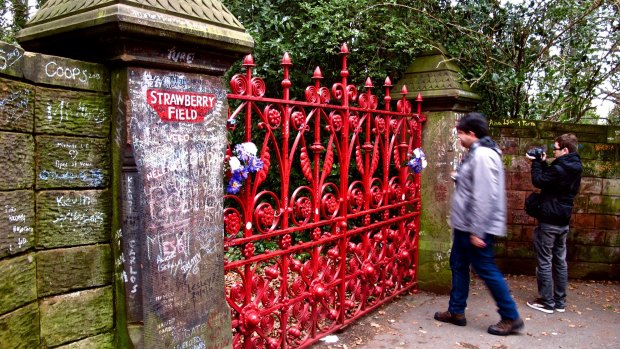
John Lennon immortalized Strawberry Field, a former children's home in Liverpool, in The Beatles' hit song Strawberry Fields Forever.Credit: iStock
Outside The Beatles Story, I hop on the Magical Mystery Tour – which transports us, by coach, into the suburbs of Liverpool where the lads grew up. Enlivened by witty, informative commentary and a soundtrack of hummable tunes, the tour stops by the humble childhood homes of John, Paul and Ringo; George's red-brick birthplace; on the real-life Penny Lane and outside the red gates of Strawberry Field (the garden of an old Salvation Army home where a young John attended summer fetes with his aunt Mimi).
On my last day in Liverpool, I return to the magnificent UNESCO World Heritage-listed waterfront, at Pier Head, to board the Dazzle Ferry – a vessel decorated in vivid psychedelic style by Sir Peter Blake. Cruising along the river, we savour views of Liverpool's skyline as Ferry 'Cross the Mersey floats from the speakers (it's by Gerry and the Pacemakers, a star of the thriving 1960s Merseybeat scene).
Back on Pier Head, I mosey past the Fab4Cafe, Fab4Store (a haven of potential souvenirs), and a new bronze statue of the Beatles (a magnet for selfie takers, pigeons and seagulls). Behind it looms the latest in Liverpool's string of musical gems. Set in the former first-class passenger lounge of the Cunard Building – a landmark from Liverpool's Edwardian pomp – the British Music Experience (BME) showcases the country's pop, rock and dance heritage (from post-World War II to the present day).
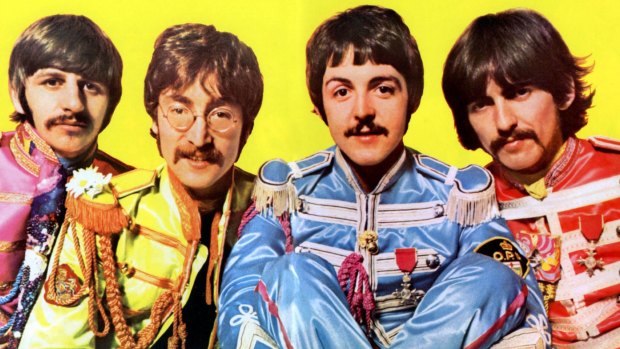
The Masters of Sgt Pepper.
On display are more than 600 exhibits, including David Bowie's Ziggy Stardust costumes, Freddie Mercury's kimono and the Spice Girls outfits, complemented by a medley of audio-visuals and interactive activities.
The Fab Four, naturally, feature; there are Beatles fan club letters, penned at the height of Beatlemania, and the door of their former London Apple studio, scribbled with devotees' messages (it was on the rooftop of this studio, in 1969, that the band played publicly for the last time).
Moving through the BME, nostalgia-inducing tunes (the Beatles' Love Me Do, Bowie's Suffragette City and The Animals' House of the Rising Sun) play in the background, and numerous exhibits catch the eye, notably the Union Jack Sheraton guitar of Noel Gallagher, who apparently once claimed his band, Oasis, would be bigger than the Beatles (he's since said he was ''high''). His brother, Liam, incidentally, has just launched a new Sgt Pepper's-inspired clothing range at his Manchester boutique, Pretty Green.
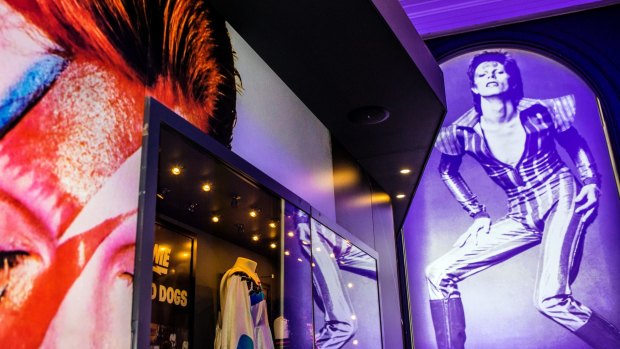
Sgt Pepper is 50, Inside the British Music Experience.
In the BME's instrument-strewn Gibson Interactive Studio, you can indulge your inner Noel, George Harrison or Ringo Starr (either follow tutorials or just strum, or hit, away; don't worry, you'll only hear the racket through headphones). After a not quite Whiplash-esque stint on the drums, I leave the BME feeling buoyant, with a mash-up of catchy music running through my head and heart. But, in truth (and I know this from previous visits), this is a normal sensation in Liverpool, a city with music coursing through its veins.
TRIP NOTES
MORE
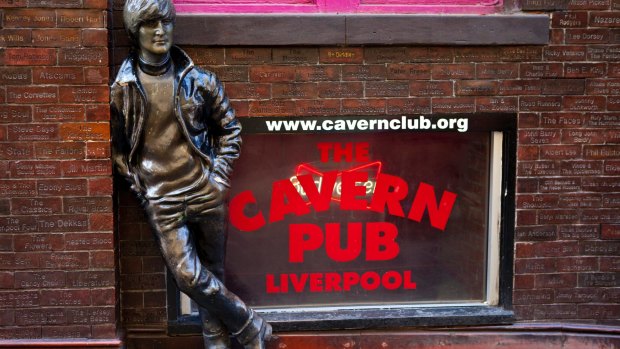
A statue of John Lennon outside the Cavern Club in Liverpool.Credit: chrisdorney iStock
www.britishmusicexperience.com
FLY
Emirates and Etihad fly to Manchester from Sydney and Melbourne via Dubai and Abu Dhabi respectively. It's an hour by train (or a 40-minute taxi ride) to Liverpool from Manchester airport. Liverpool is two hours from London by rail.
STAY
Rooms at the Hard Days Night Hotel are available from £90 ($157), but often cost double that at weekends. Priced £450 ($784) for two, the hotel's Ultimate Beatles Package includes two nights B&B, entrance passes for the Cavern Club, Magical Mystery Tour and Beatles Story, a private Beatles taxi tour and a Strawberry Field cocktail at the hotel's Bar Four; www.harddaysnighthotel.com
Steve McKenna was a guest of Visit Britain and Visit Liverpool
FIVE OTHER GREAT BRITISH MUSIC CITIES
1. MANCHESTER. Before Oasis emerged in the 1990s, The Smiths, New Order and the Stone Roses put Manchester (or Madchester) on the music map. A black taxi tour takes you to these bands' favourite old hang-outs; www.manchestertaxitours.co.uk
2. GLASGOW. Like Liverpool, a UNESCO City of Music, Glasgow oozes musical creativity, birthing the likes of Franz Ferdinand, Travis, Simple Minds and Lonnie Donegan – a pioneer of the 1950s skiffle music that inspired the Beatles. There are, on average, 130 live music events in Glasgow each week, including at King Tut's Wah Wah Hut (where Oasis were signed); www.peoplemakeglasgow.com
3. BIRMINGHAM. Britain's second largest metropolis is a mecca of metal, a genre fashioned, it's said, by the heavy industry that once dominated the city. Discover more about Brummie bands Led Zeppelin, Black Sabbath and Judas Priest on a music-flavoured open-top bus tour; www.birmingham-tours.co.uk
4. BRISTOL. Massive Attack, Portishead and Roni Size all hail from this cosmopolitan port city. Fusing reggae, dub, triphop, jungle and drum and bass, the so-called Bristol Sound fuels some of south-west England's best bars and clubs; www.visitbristol.co.uk
5. LONDON. From the Rolling Stones and the Sex Pistols to Adele and Amy Winehouse, London has produced countless musical icons, and it's a hotbed of nightly gigs and summer festivals featuring acts from home and abroad. Soak up the city's incredible musical heritage with London Rock Tours; www.londonrocktour.com
Sign up for the Traveller Deals newsletter
Get exclusive travel deals delivered straight to your inbox. Sign up now.